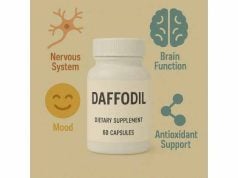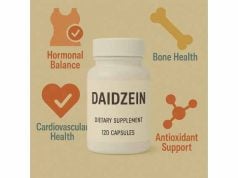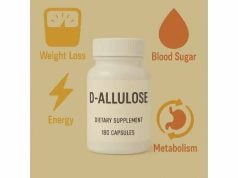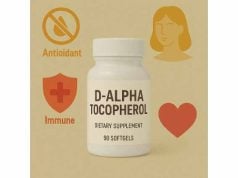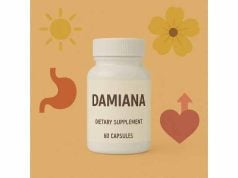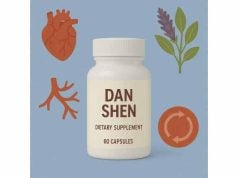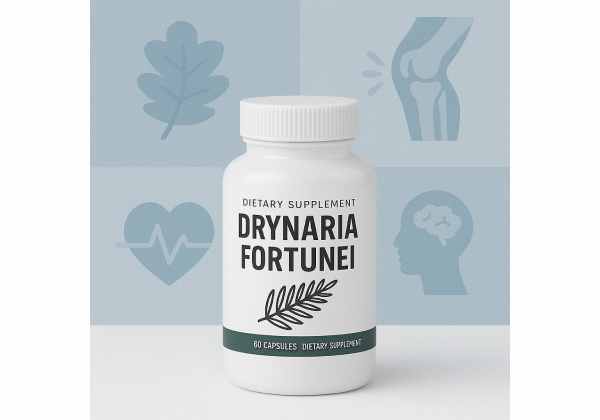
Drynaria fortunei—known in Traditional Chinese Medicine (TCM) as Gu Sui Bu, or “mender of shattered bones”—is a fern rhizome used for bone support and fracture recovery. Modern analyses point to total flavonoids (notably naringin, naringenin, and neoeriocitrin) as its main bioactive compounds that can stimulate bone formation and temper bone resorption. Clinical trials (largely in China) have evaluated standardized extracts such as total flavonoids of Rhizoma Drynariae (TFRD) and the patent medicine Qianggu Capsule for osteoporosis and post-fracture care. While findings suggest improvements in bone markers and bone mineral density, quality and sourcing matter, as does safe use—especially for people who are pregnant, breastfeeding, or taking medications with known food–drug interactions. Below is a practical, evidence-based guide to help you use Drynaria thoughtfully.
Quick Drynaria Highlights
- Supports bone formation and reduces bone resorption in osteoporosis, with improved bone markers in clinical studies.
- May aid fracture recovery when used consistently for weeks to months alongside standard care.
- Usual crude-herb dose: 3–9 g/day of dried rhizome as a decoction; standardized extracts follow product directions.
- Avoid during pregnancy and breastfeeding; consult a clinician if you use medications sensitive to grapefruit-like interactions.
- Most reported side effects are mild digestive issues; choose products tested for contaminants.
Table of Contents
- What is Drynaria fortunei and does it work for bone health?
- Evidence-backed benefits: osteoporosis, fracture healing, and beyond
- How to take Drynaria: forms, preparation, and dosing
- Quality, sourcing, and stacking: choosing a safe, effective product
- Safety first: side effects, interactions, and who should avoid it
- What the research says in numbers
What is Drynaria fortunei and does it work for bone health?
Drynaria fortunei (Gu Sui Bu) is the dried rhizome of a basket fern used in East Asian medicine for bone and joint support. The herb’s reputation comes from centuries of use for fractures, low back and knee weakness, and post-injury convalescence. In modern terms, Drynaria’s activity traces to flavonoids—especially naringin and naringenin—which influence bone remodeling at multiple control points:
- Pro-formation: These compounds upregulate osteoblast differentiation and activity, often via BMP-2/Runx2/Osterix and Wnt/β-catenin signaling. They also raise alkaline phosphatase (ALP) and collagen expression—hallmarks of new bone formation.
- Anti-resorption: Naringin and related flavonoids can dampen the RANKL–NF-κB axis, reducing osteoclast formation and activity.
- Microenvironment support: By moderating oxidative stress and low-grade inflammation, Drynaria may create conditions more favorable to bone accrual. Some preclinical work also shows improved coupling between angiogenesis and osteogenesis, a key element in fracture healing.
Beyond mechanisms, human evidence matters. Standardized total flavonoids of Rhizoma Drynariae (TFRD)—the concentrated fraction used in many trials—has been studied in postmenopausal and age-related osteoporosis. Meta-analyses report improvements in bone formation markers and suppression of resorption markers, while earlier clinical reviews suggest modest gains in bone mineral density (BMD) and overall therapeutic effect when TFRD is used alone or alongside conventional therapy.
Takeaway: Yes, Drynaria can be relevant for bone health, particularly as a supportive option in osteoporosis management and post-fracture recovery. As with most botanicals, effect sizes vary, trials are heterogeneous, and results are best when Drynaria complements—not replaces—core strategies like adequate calcium, vitamin D, protein, resistance exercise, and clinician-directed therapies.
Evidence-backed benefits: osteoporosis, fracture healing, and beyond
Osteoporosis (primary, postmenopausal, senile). Clinical meta-analysis of randomized trials using TFRD shows consistent shifts in bone biochemistry toward formation: increases in markers like bone gla protein (osteocalcin) and procollagen type I N-terminal propeptide (PINP), a rise in ALP, and a decrease in tartrate-resistant acid phosphatase (TRACP)—all pointing to an osteoanabolic tilt. These biomarker changes are important because they forecast remodeling balance before significant changes in BMD appear. In parallel, earlier systematic reviews of TFRD (often delivered as Qianggu Capsule) report improvements in BMD and composite “overall effectiveness” outcomes over 3–8 months of use. Although methodological quality varied, the direction of effect was generally favorable.
Fracture healing and bone regeneration. Preclinical models show that Drynaria’s flavonoids stimulate osteoblast activity, matrix deposition, and vascular signaling—processes critical to callus formation and maturation. Some animal and surgical-adjacent models suggest enhanced bone graft mineralization and better defect repair with TFRD or naringin-enhanced biomaterials. In clinical contexts, TFRD has been used as an adjunct to standard care in osteoporotic fractures, with reviews noting BMD gains and symptomatic improvement; however, endpoints like time to union and refracture reduction require more high-quality, prospectively registered trials.
Spine, joints, and cartilage. Mechanistic and preclinical studies indicate naringin’s anti-inflammatory and anti-catabolic actions in cartilage and intervertebral disc models. These data support Drynaria’s traditional use in back and joint complaints, but human trials focused on osteoarthritis or disc degeneration are sparse, so claims here should remain cautious.
Who seems to benefit most?
- Adults with postmenopausal or age-related bone loss who can commit to 8–24 weeks of consistent use.
- Individuals recovering from low-energy fractures who are following clinician-directed programs and want a botanical adjunct.
- People unable to tolerate certain pharmaceuticals may consider TFRD as part of a supervised plan, recognizing that evidence quality is improving but not definitive.
What Drynaria will not do. It is not a substitute for bisphosphonates, denosumab, anabolic injectables, or surgical stabilization when those are indicated. It is best viewed as adjunctive support—nutritional, mechanistic, and symptomatic—within a comprehensive bone-health plan.
How to take Drynaria: forms, preparation, and dosing
Crude herb (traditional decoction). Authoritative pharmacopoeial guidance lists a daily intake of 3–9 g of Drynariae Rhizoma (dried rhizome). A practical approach is to simmer the sliced rhizome 20–30 minutes in water, strain, and drink the decoction in 2–3 divided servings with food to reduce digestive upset. Many TCM clinicians combine Drynaria with synergistic herbs tailored to your pattern and overall health.
Standardized extracts (TFRD, concentrated powders, capsules).
- TFRD refers to the total flavonoid fraction standardized from Drynaria rhizome and is the form used in many trials and in the Chinese patent medicine Qianggu Capsule. Capsule strengths vary by manufacturer; follow labeled directions or your clinician’s advice.
- Concentrated powders often specify an extract ratio (e.g., 5:1). As a ballpark conversion, 3–9 g of crude herb ≈ 0.6–1.8 g/day of a 5:1 extract (this is a pharmacotechnical equivalence, not a clinical prescription). Split into 2–3 doses with meals.
Duration and timing. Clinical studies commonly run 12–24 weeks. For osteoporotic bone, months of steady use are typical before DXA-detectable changes; biochemical shifts may arise earlier. Many people take Drynaria with breakfast and dinner to support adherence.
With what and when.
- Pair with adequate calcium (1,000–1,200 mg/day from diet plus supplements as needed) and vitamin D (per blood levels); ensure sufficient protein (1.0–1.2 g/kg/day for older adults unless contraindicated).
- If you take medicines known to interact with grapefruit components (see safety), separate Drynaria and such medications by several hours and discuss with your prescriber.
Who should supervise dosing. Individuals with osteoporosis, recent fractures, chronic diseases, polypharmacy, or hormone-sensitive conditions should involve a clinician. In TCM practice, dosing is also adjusted to the person’s pattern (constitution, digestion, circulation, and recovery phase).
Taste and alternatives. Decoctions are earthy and slightly bitter. If palatability is a barrier, capsules or granules offer convenience and better dose consistency. For strict vegetarians or those with specific allergies, verify excipient lists in capsules and extracts.
Quality, sourcing, and stacking: choosing a safe, effective product
Choose tested products. Roots and rhizomes can accumulate heavy metals from soil and processing. Surveys of commercial batches have found occasional exceedances of regulatory limits for elements like cadmium and lead among several Chinese herbs, including Drynariae Rhizoma. To lower risk:
- Prefer brands with third-party testing (COA for heavy metals, pesticides, and microbial contamination).
- Look for pharmacopoeial compliance (e.g., Chinese Pharmacopoeia) and Good Manufacturing Practices (GMP).
- Buy from reputable suppliers with lot tracking and clear botanical identity (Latin binomial, plant part, country of origin).
Standardization matters. If your goal is to mirror clinical studies, consider products that specify TFRD or list total flavonoid content. While exact targets vary, transparent labeling (assay methods, marker compounds) is a welcome sign of quality.
Smart stacks for bone health.
- Foundations: Calcium, vitamin D, magnesium, vitamin K2, and protein are the cornerstone nutrients; ensure adequacy first.
- Exercise: Combine with resistance and impact training to stimulate osteogenesis.
- Adjuncts: In some preclinical work, pairing Drynaria flavonoids with calcium enhanced bone outcomes; think of Drynaria as an adjunct to—not a replacement for—core bone therapy.
- Avoid redundancy: If you already use phytoestrogen-rich products (e.g., high-dose isoflavones), stacking may be unnecessary or unwanted in estrogen-sensitive conditions.
Troubleshooting common pitfalls.
- Inconsistent dosing dilutes benefit—set reminders and align doses with meals.
- Unknown extract ratios make equivalence guesses unreliable—contact the vendor for specifications.
- Gastrointestinal discomfort (most common side effect) often improves by taking with food, reducing dose, or switching form (e.g., from decoction to capsules).
Cost–benefit perspective. Drynaria is not a quick fix; think in multi-month horizons. Optimize diet, exercise, sleep, and medication adherence first, then layer Drynaria as a targeted botanical if the goals, budget, and safety profile make sense for you.
Safety first: side effects, interactions, and who should avoid it
Typical side effects. Clinical reviews of standardized Drynaria flavonoids report mostly mild, reversible gastrointestinal symptoms (e.g., nausea, fullness, constipation). Discontinue and seek care if you notice allergic reactions, severe abdominal pain, or unexplained bleeding.
Pregnancy and breastfeeding. National regulatory guidance for TCM-based products advises: do not use Drynaria during pregnancy or breastfeeding. This aligns with traditional caution and modern prudence given limited safety data in these groups.
Drug–nutrient interactions (important). Drynaria’s key flavonoid naringin is the same compound abundant in grapefruit. In humans, naringin can inhibit the intestinal uptake transporter OATP1A2, and grapefruit components can also affect CYP3A-metabolized drugs. Practical implications:
- Drugs whose absorption depends on OATP1A2 (e.g., fexofenadine, some fluoroquinolones, aliskiren) may show lower exposure if taken concurrently with naringin-rich products.
- CYP3A-sensitive drugs (certain statins, calcium channel blockers, immunosuppressants, others) can be affected by grapefruit; while Drynaria is not grapefruit juice, the shared constituent (naringin) warrants caution.
- To reduce risk, separate Drynaria from such medications by several hours and consult your prescriber before starting Drynaria if you take narrow-therapeutic-index drugs.
Hormone-sensitive conditions. Laboratory and animal data suggest estrogen-receptor-mediated actions for Drynaria flavonoids. If you have a history of estrogen-receptor–positive cancers or are on hormone therapy, discuss Drynaria with your oncologist or endocrinologist.
Quality and contamination risks. As noted, choose brands that publish COAs. If using raw herbs, buy from trusted suppliers who screen for heavy metals and adulterants.
When to stop and seek care.
- New or worsening symptoms, palpitations, dizziness, shortness of breath, unusual bruising, or signs of liver stress (e.g., dark urine, jaundice) require prompt evaluation.
- Any planned surgery or dental implant—stop Drynaria and inform your clinician, who will advise on timing around procedures.
What the research says in numbers
- Biomarkers: In randomized trials of TFRD, meta-analysis shows higher osteocalcin and PINP, higher ALP, and lower TRACP, consistent with net bone formation.
- Clinical trials: Systematic review of 6 RCTs (n ≈ 846) using TFRD/Qianggu Capsule for osteoporotic fractures reported BMD improvements and overall therapeutic benefit versus controls; most adverse events were gastrointestinal and non-serious.
- Course length: Trials typically ran 3–8 months; real-world bone density changes often require months to register on DXA.
- Traditional dosing: 3–9 g/day of Drynariae Rhizoma (crude rhizome) is the pharmacopoeial daily range for decoction.
- Quality flags: Market surveys of roots and rhizomes (including Drynaria) have found occasional cadmium and lead exceedances, underscoring the need for tested products.
References
- Effects of total flavonoids of Rhizoma Drynariae on biochemical indicators of bone metabolism: a systematic review and meta-analysis (2024) (Systematic Review)
- Total flavonoids from Rhizoma Drynariae (Gusuibu) for treating osteoporotic fractures: implication in clinical practice (2017) (Systematic Review)
- The Development of Naringin for Use against Bone and Cartilage Disorders (2023) (Review)
- Trace heavy metals and harmful elements in roots and rhizomes of herbs: Screening level analysis and health risk assessment (2022) (Includes Chinese Pharmacopoeia 2020 daily dosage for Drynariae Rhizoma)
- NATURAL HEALTH PRODUCT TRADITIONAL CHINESE MEDICINE INGREDIENTS (TCMI) (2025) (Guidance; includes pregnancy and breastfeeding contraindication)
Disclaimer
This guide is for educational purposes and does not replace personalized medical advice, diagnosis, or treatment. Herbs can interact with medications and underlying conditions. Always consult a qualified health professional—especially if you have osteoporosis, a recent fracture, cancer history, are pregnant or breastfeeding, or take prescription drugs—before starting Drynaria fortunei or changing your regimen.
If you found this article useful, please consider sharing it on Facebook, X (formerly Twitter), or your preferred platform, and follow us for more evidence-based wellness guides. Your support helps us continue creating high-quality content.

